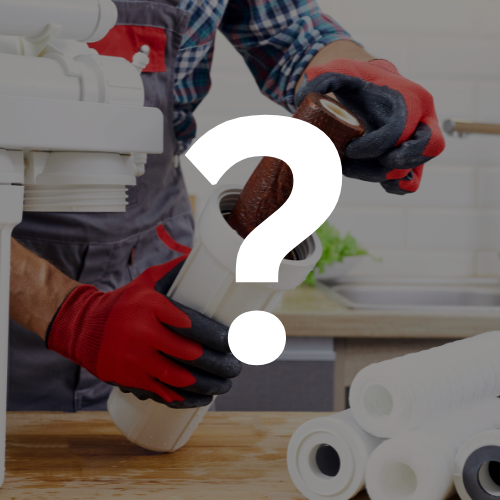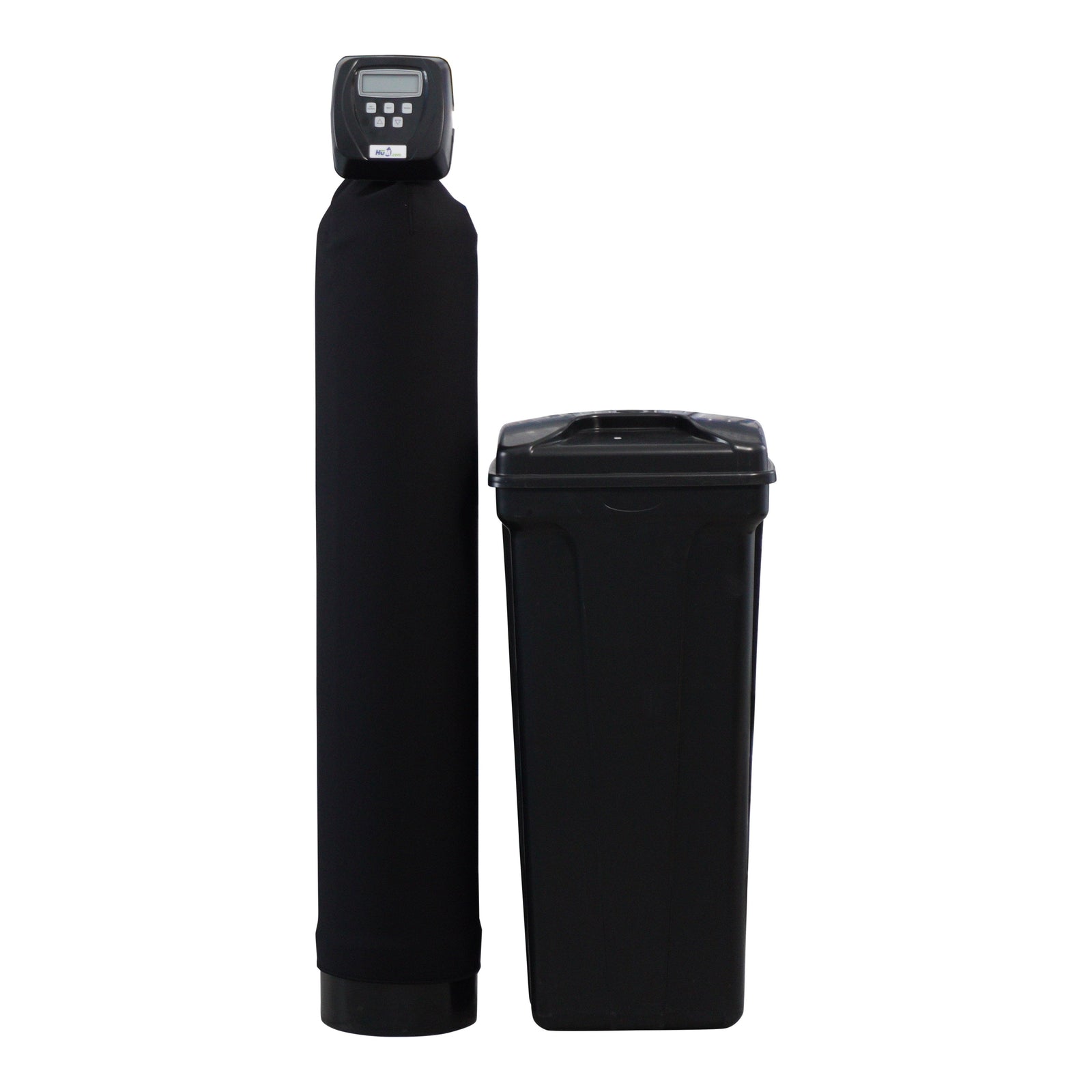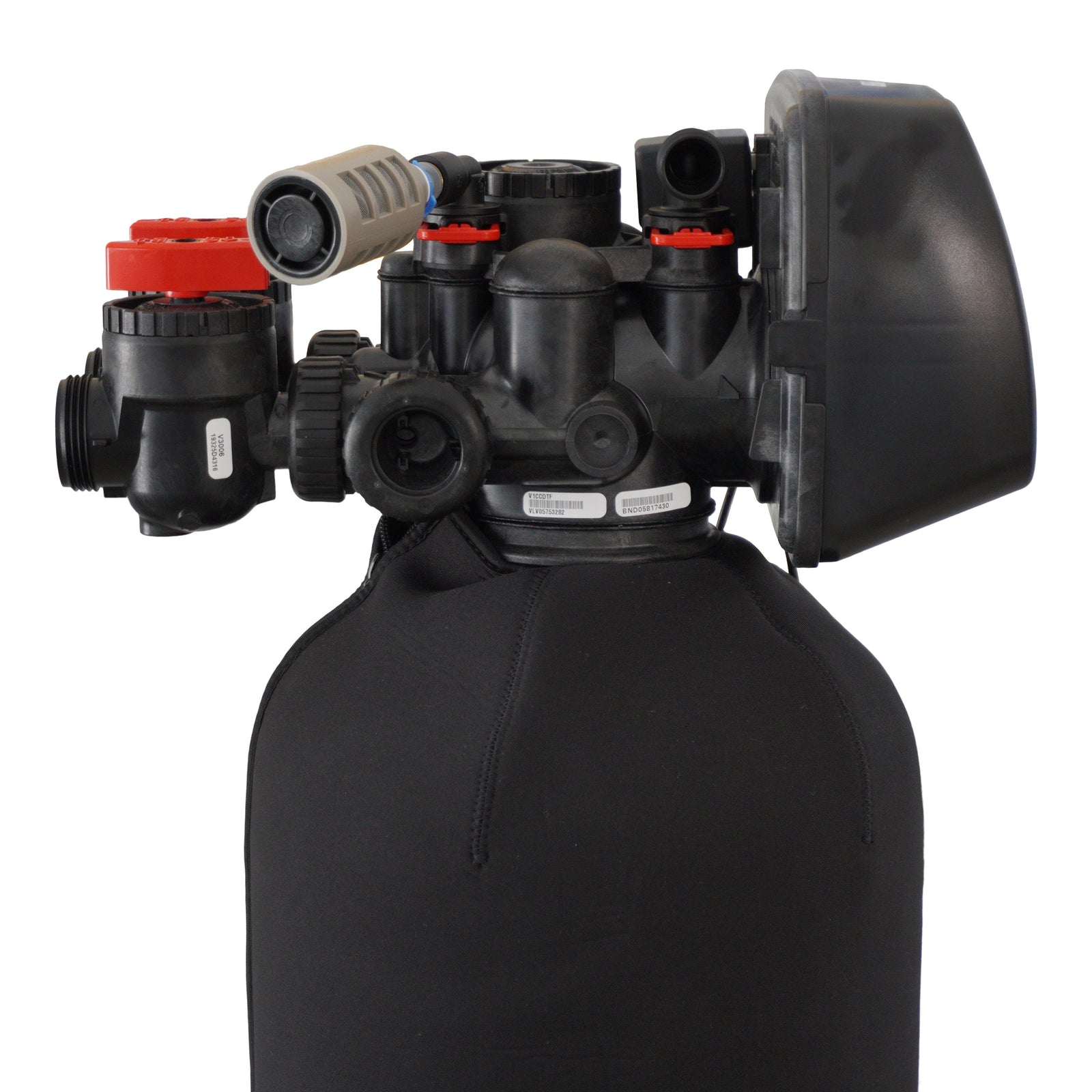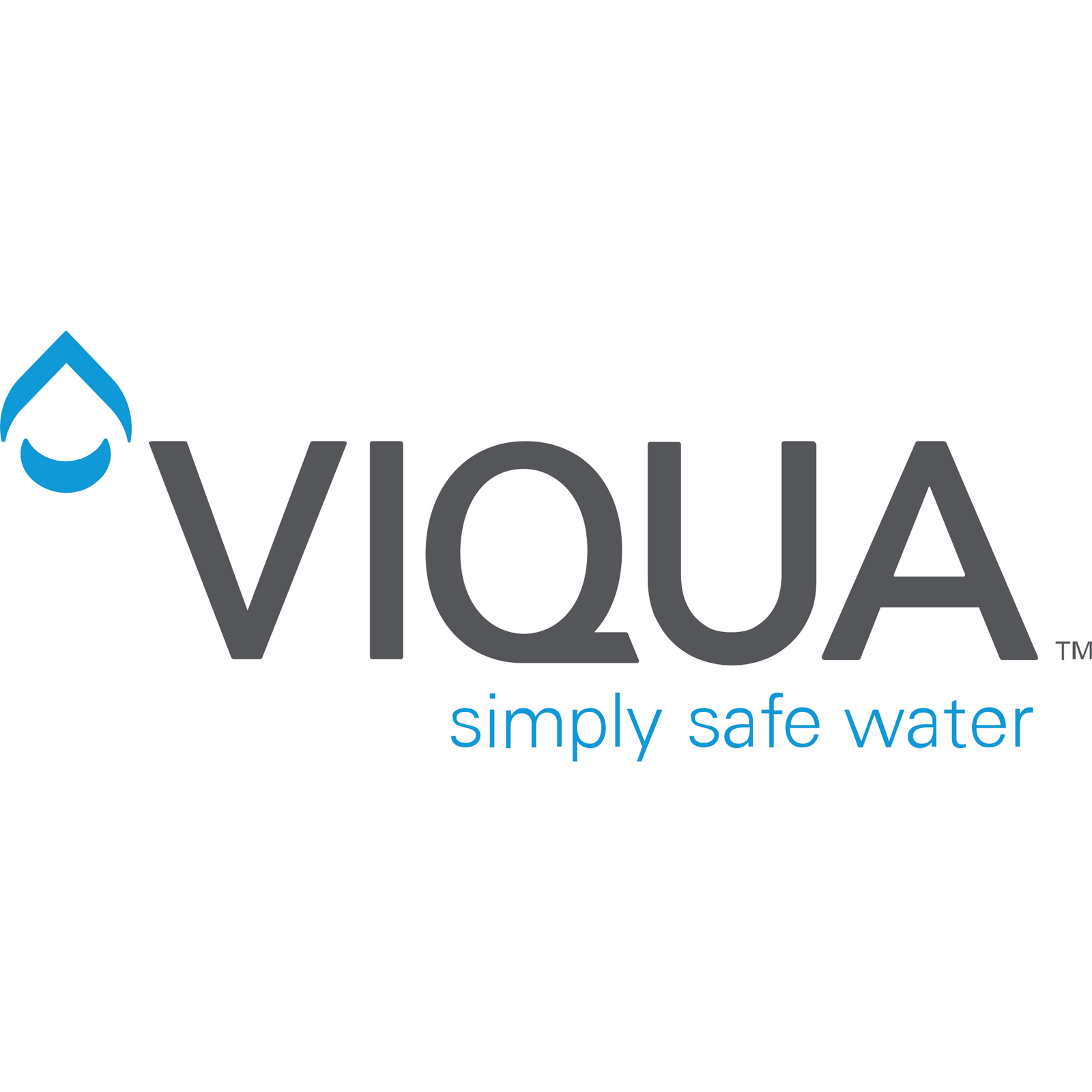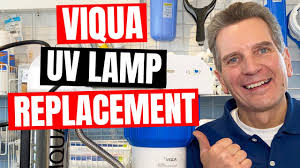
Annual maintenance of replacing the filters and Ultraviolet lamp on your Easy Viqua VH200 F10 or VH410 F20 UV System will help ensure your system continues running smoothly. Properly caring for your system also helps ensure that the water at your home, cottage, or cabin remains safe for your family.
Not sure how or where to start? Don't worry, I'm here to show you how.
For VH200-F10 Replacement Bundle video, click here.
For VH410-F20 Replacement Bundle video, click here.
Ready to begin your UV System's annual maintenance? Great, let's get started!
- Shut off the water supply and open one downstream faucet to release pressure. Press the button on top of the filter housing to release the pressure from the cartridges.
- Disconnect the power source and allow the unit to cool for about 10 minutes.
- Remove the lamp connector by squeezing the plastic locking tabs on the side of the connector and pulling.
- Remove the lamp in upward direction from the chamber and lamp connector base.
- Remove the bottom and top retaining nut, floating spring from bottom, and O rings. Clean the quartz sleeve with a cloth soaked in CLR, vinegar or some other mild acid and then rinse with water. Note: If sleeve cannot be cleaned completely or it’s scratched or cracked, then replace the sleeve.
- Reinstall the quartz sleeve in the chamber allowing the sleeve to protrude an equal distance at both ends of the chamber. Slide supplied O-rings onto each end of the quartz sleeve.
- Reinstall the top and bottom retaining nuts, floating spring in the bottom, and O-rings.
- Insert the new lamp fully into the chamber leaving about two inches of the lamp protruding from the chamber.
- Attach the connector to the lamp. Note that the connector will only allow correct installation in one position
- Hold down the timer reset button and reapply power to the controller until you see rSET, then release timer reset button. A 5 second delay will occur until you hear an audible tone and LED display will read 365 once again.
- Remove the filter housing from the unit by turning the blue collar counter-clockwise until it falls free from the head. Pull down the white filter housing with caution; you'll want to be careful as it will be full of water and will be heavy.
- Remove and discard the old cartridge, wash out the housing and install new cartridge.
- Reinstall the housing making sure O ring is coated with silicone grease and is fully seated on the housing.
- Open a faucet downstream of the system and turn on the water supply. After air has been purged, close the downstream faucet. Press the pressure button to purge air.
LOVE GARY THE WATER GUY AND WANT TO LEARN MORE ABOUT WATER FILTRATION FOR YOU & YOUR FAMILY? HERE'S WHERE YOU CAN FIND ME!
1) SUBSCRIBE
Stay in the loop on
YouTube
2) LET’S CONNECT!
Like me on Facebook
Follow me on Twitter
Reach out on
LinkedIn
Follow Water Estore on
Instagram
Follow Water Store Midland on
Instagram
3) CONTACT!
info@WaterEstore.com or info@WaterStoreMidland.com
4) SHOP!
Midland
www.WaterStoreMidland.com
Canada
www.WaterEstore.ca
USA
www.WaterEstore.com
Video Transcript
Gary The Water Guy:
So you've invested in a Viqua VH410 F20, or Viqua VH200 F10, like this one here, ultraviolet disinfection system and mini rack system to make the water at your home cottage or cabin safe for your family. Good call. Now a year later, it's time to do the maintenance. You've probably noticed that the timer here is counted down to zero or 10 or something like that. It's time to do the maintenance. Not sure how to do it? Not sure what's involved? Well, I'm going to show you how to do it the easy way right now.
Gary The Water Guy:
Hi, I'm Gary The Water Guy. I simplify water filtration to help you conquer crappy water for your family. Okay. So let's get started. So the first thing you're going to want to do is you are going to want to shut off the water. So you'll have a shutoff valve somewhere after the pressure tank, anywhere before the system. This is the inlet side here. So your unit may be reverse because one of the great features of this system is that it can be installed reverse. So whatever side the white filter is on is your inlet side.
Gary The Water Guy:
So you're going to need to shut off the water before that. So shut off the water, and then you're going to go anywhere in the house, a laundry room or a bathroom or something like that, open up the faucet and release all the pressure. Let the water flow right down to a trickle. Once it's flowed down to a trickle, then if you have a shutoff after on the UV side of the system, you can shut that off. That'll keep the house water from draining back through the system and causing a lot more water draining out of here than you really want.
Gary The Water Guy:
All right. So once you've completed that, then you would unplug the unit. It's usually easiest to unplug it here, and you'll see why later on. All right, once you've got an unplugged, then you need to tackle the lamp. So what are you going to do is I got to turn this a little bit to make it a little bit easier for you to see. So we'll just turn this like this.
Gary The Water Guy:
All right. Great. So this system has a clip here, which has two sides to it. So what you do is you squeeze that in and then pull it up. You may have to wiggle it just a wee bit, not very much, just a wee bit. So as you're pulling it up, you can see the lamp here. So we're not going to handle the lamp with our bare hands. We're going to use a cloth or clean gloves. So then just grab the lamp, and then you're going to pull the electrical connector straight off it. Again, you can wiggle it just a little wee bit. Pull it straight off. And then again, using your cloth or your clean gloves, you just pull the lamp out. All right. Set that aside.
Gary The Water Guy:
So now we want to remove the sleeve itself. So there's two nuts at either end. They're black. So what you need to do is unscrew them. So you can unscrew the top one. So these should be installed only hand-tight. If they were installed hand-tight the last time by whomever put it in, or when it was originally installed, they'll unscrew hand-tight. If they don't, you may have to use pliers or something like that to grab them and then screw them. You'll see also at this end that there's spring here. People always ask me, "What does that spring do?" It's just a setup that when you put the lamp in, if for some reason that you let go of it, it would go flying right through the other end and you'd likely break it. So the spring just cushions the fall if that were to happen.
Gary The Water Guy:
All right. So then grab the sleeve at the ends, and then just slide a little bit up and down. And you'll feel the o-rings come loose. So again, you pull up the sleeve. And again, you can handle the ends with your bare hands, but the middle part, you will have to only handle with a cloth. Typically, you need to check and see how clean the sleeve is. And this is a very important part, and a part that a lot of folks miss, is the sleeve has to come out every time you do maintenance on this system. So now you can clean that sleeve. So what do you use? You can use CLR, vinegar, products like that to clean the sleeve.
Gary The Water Guy:
Make sure when you're cleaning the sleeve, the sleeve has to be a hundred percent clean. It has to look just brand new, just like this one here. If you can't get it clean, you have to replace that sleeve. Because if the sleeve has deposits on it, or it has a haze on it, or iron, or something like that, the light isn't strong enough to shine through that to kill the bacteria. In other words, like drawing a curtain across that light. And the money that you've invested in an ultraviolet replacement lamp, actually in the whole system, is wasted.
Gary The Water Guy:
Once you've cleaned the sleeve, then you would slide it back in. Again, you can handle it by the very ends. Be very careful. The sleeve is very, very fragile. And if you break the sleeve, the system isn't going to work until you get a new one. If you don't have a bypass built around your UV system, then you won't even have water in your home cottage or cabin until that's been repaired.
Gary The Water Guy:
All right. Once you've got the sleeve in there, and you've got the o-rings on both ends, you should wet the o-rings. I always suggest using plumbers clear silicone grease, but at least wet them with water. And then [inaudible 00:04:57] will go, along with the spring, goes on the bottom. Again, you're only going to make that hand-tight. And then the one without the spring is going to go on the top, and again, hand-tight. So I tighten them up both together at the same time.
Gary The Water Guy:
All right. Then what we're going to do is we're going to grab our new lamp. Now you'll see the end is keyed. It has four pins on it, they're one, two, three different lengths. So there's only one way that this can go into here, can go into the end of the electrical connection here. Okay. What you can do is you can hold the lamp, something like this, and then just make sure you line up the longest pin with the correct connection. All right. And then you're going to slide this down onto here.
Gary The Water Guy:
Now, one thing I should mention, this is a safety lock here. If you haven't, at this stage, you say, "Oh, I'm going to check it to see if it works." And you plug it in and it doesn't work, don't be surprised. Because it has to be clipped right into the safety lock before the lamp will work. By the way, you don't want illuminate the lamp and stare at it with your eyes, because the UV light will actually damage your eyes. So don't do that. Slide it down. But you have to slide it right down until it clicks. I don't know if you heard that or not, but it needs to click in place.
Gary The Water Guy:
Okay, great. So we've got that part of it done. So now what we need to do is we need to tackle the filter part of it. So with your system, it would've come with a wrench, something like this to remove. Gary, lefty loosey, righty tighty. You slide this on here, and then screw that. There's also a pressure release button up at the top here. It's a good idea to press that before, to release the pressure. You have to release all the pressure before you can unscrew this. If you have trouble getting it off, double check to make sure you've released all the pressure in the system. So then what you would do is you would just unscrew this. Yours, of course, would be firmly mounted on the wall. Where, of course, mine isn't here. It's just on this rack. So once you've unscrewed that, this collar will drop off.
Gary The Water Guy:
There it is. All right. Like I said, the collar will drop off. Now, one thing I'd like to make you aware of is that this does have a drain port at the bottom. So maybe not so much with this 10 inch filter, but the VH410 with the 20 inch filter, this is going to be super heavy, especially when it's full of water. So it's not a bad idea to unscrew that drain port at the bottom, drain all the water out, make it much easier to handle. Just make sure you remember to put the drink port back in. All right. So then once you've replaced the filter, then, again, I would suggest using plumbers clear silicone grease on this o-ring. And then we put this back inside here, slide this back up to the unit, like so. Then we can slide that.
Gary The Water Guy:
So one of the neat things that Viqua does is they put right on here which model number filter you need when it comes time to make the replacement. It's always a good idea to position that toward the front. And again, if you're looking for lamps, like now for example, when it's time to replace the lamp and the sleeve, we have them on our website. Click up here for our bundles. We actually sell them in bundles. It'll save you some money buying it that way. If you're not sure what model number you have, it's written here by the way.
Gary The Water Guy:
All right. So once you get to this stage, now often they say that this filter housing should be only hand-tight. Well, when you get to a certain age, I'm not sure hand-tight is tight enough. So what I do is I just tighten it just a little bit more using the wrench, just to make sure it doesn't leak. All right, great. So now what you've done, you've changed the filter, you've changed the lamp, you've cleaned the sleeve. You're in great shape.
Gary The Water Guy:
Now what you need to do is reset the timer. So again, what you've probably noticed when this unit was first installed, it was displaying 365 here, and then counted down the days, counted down the days. And it started beeping to remind you it's time to replace the lamp, et cetera. So if it gets down below zero, it goes to A3, and that just tells you that it's overtime. So it's not a troubleshooting thing, or it's not a warning, or an error message. It just tells you that you've gone over.
Gary The Water Guy:
Okay. So now what you need to do is on the side here, there's a little reset button. You're going to push in that reset button, but you're going to hold it in. Then you're going to take the power cord and you're going to plug it in. And once you plug it in, it'll pause for, I don't know, four or five seconds, and then you'll see the word "reset" show up on the screen here. I always wait until I see the word reset, and I count to five. After I count to five, I let go of the button. There's a short pause, and then it'll go to 365. And that tells you that the unit has been reset.
Gary The Water Guy:
So now you're ready to turn the water on. So what you would do is we'd go to that shutoff that you used on the waterline coming into the unit. You would open it only partially, because you don't want to open it full blast, so you've got a full blast of water going through here in case you have any leaks. So you just open it partially, let the unit fill up and check for leaks. If you don't have any leaks, then you can open it up fully. Then you can go to a faucet, anywhere downstream of this, and open it up. You'll see bursts of air coming out, let the water run until it runs without any of those bursts of air. Let the water run to a smooth stream.
Gary The Water Guy:
So one point I'd like to mention at this point is if the system has been shut down for whatever reason, or if the UV lamp was in here a lot longer than those 365 days, then you're going to need to disinfect the plumbing in your home cottage or cabin, just to make sure that there are no bacteria there so that your unit can function properly. I have a great YouTube video that shows you how to do that. I'll put it in the cards up above and a link in the description down here below. To learn more about ultraviolet disinfection, click over here for my next video. And I'll see you there.

